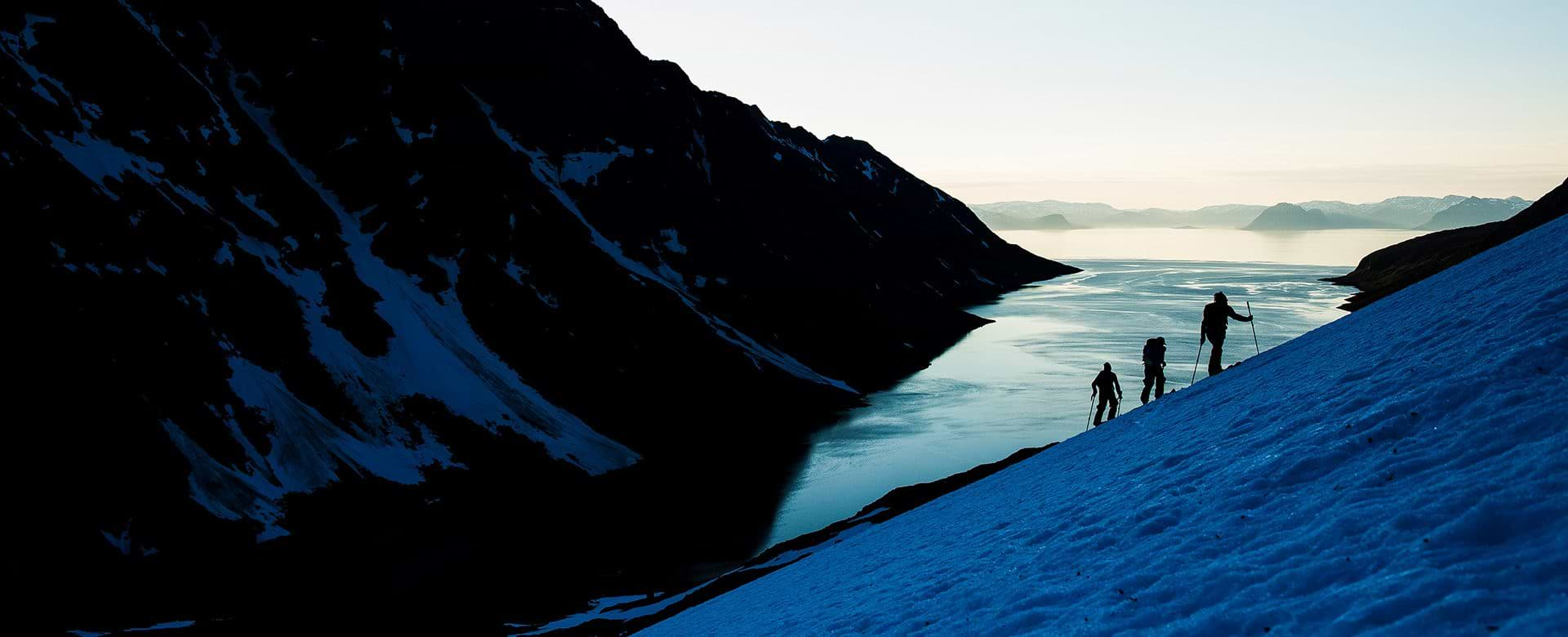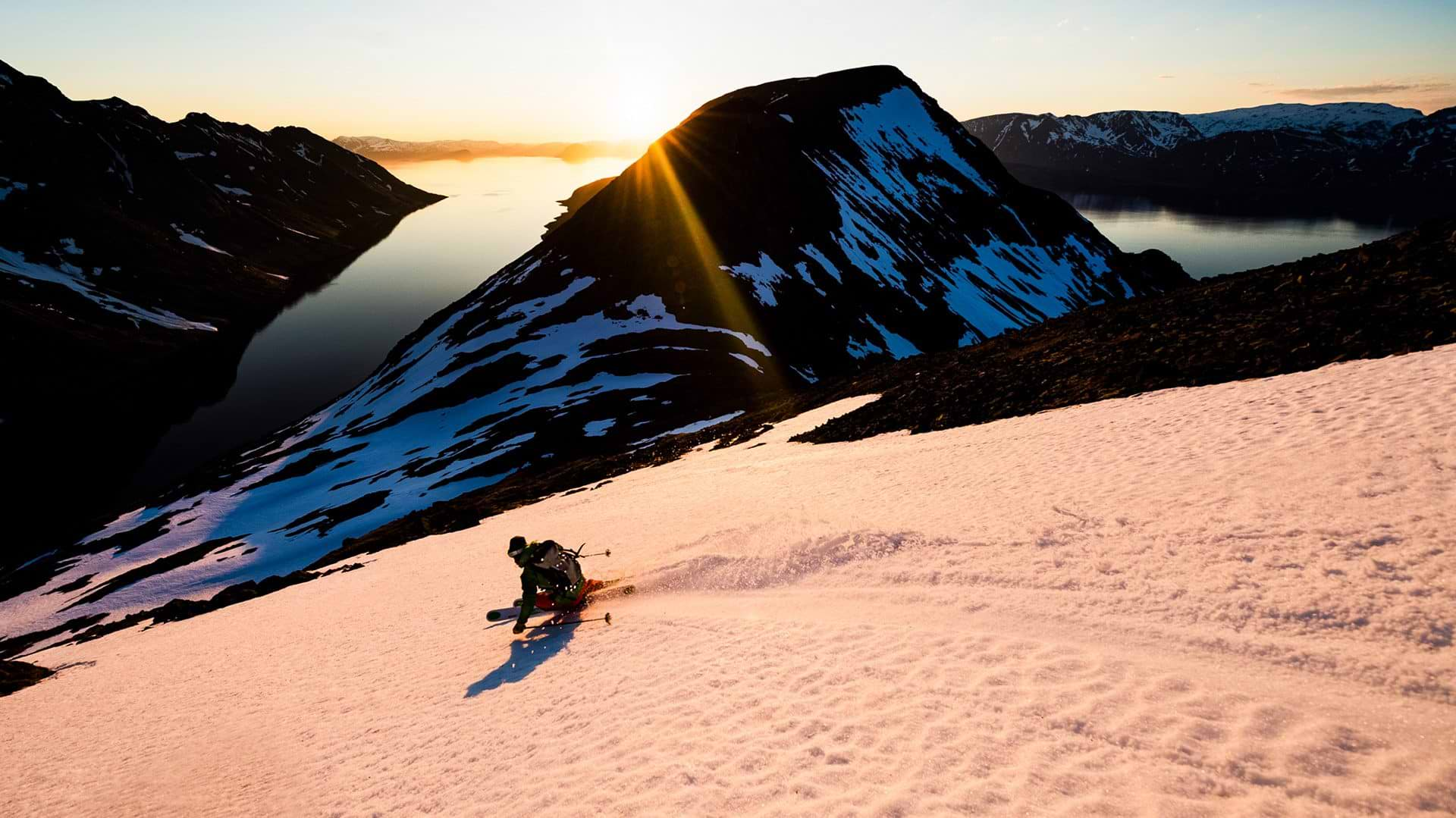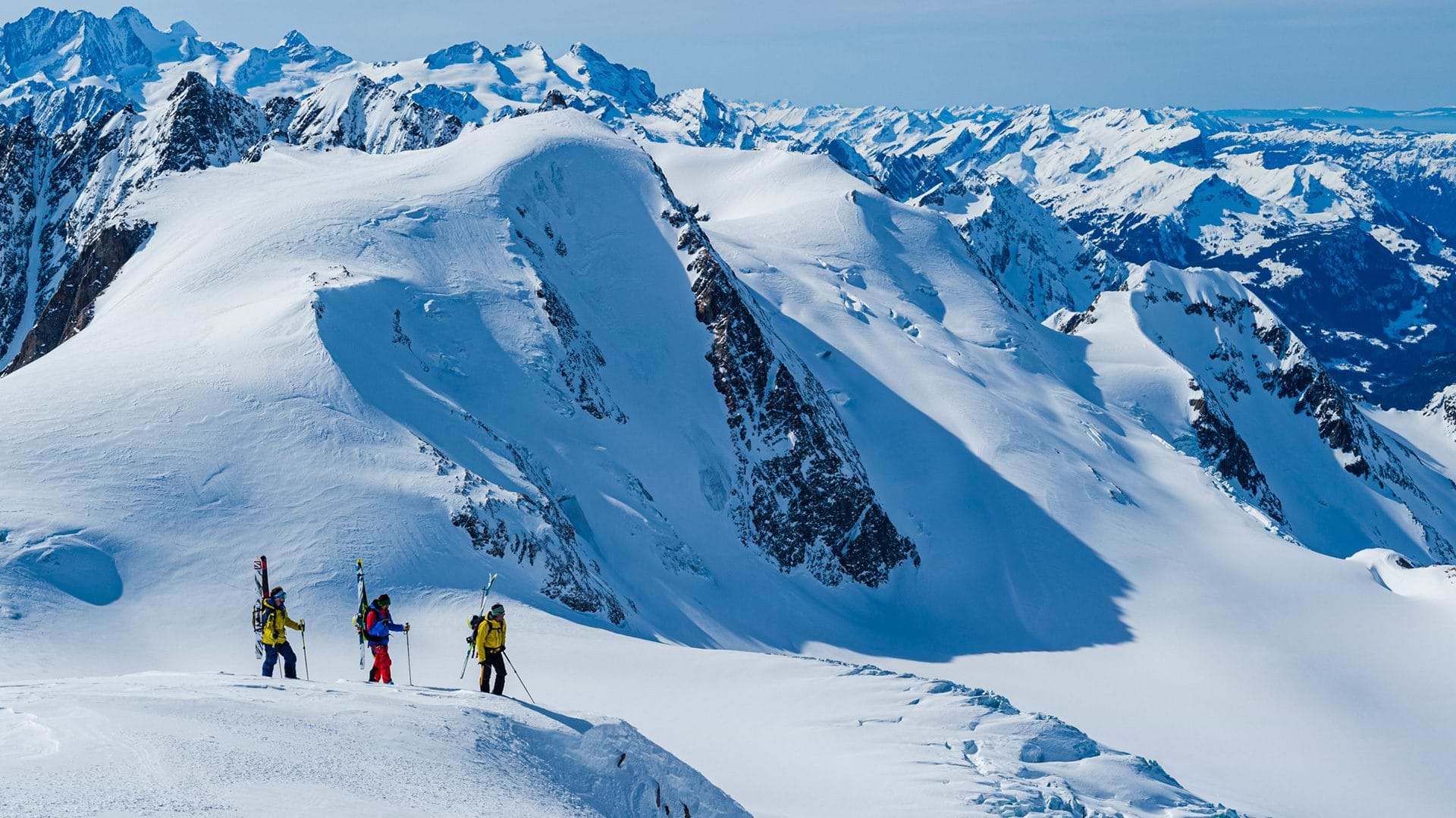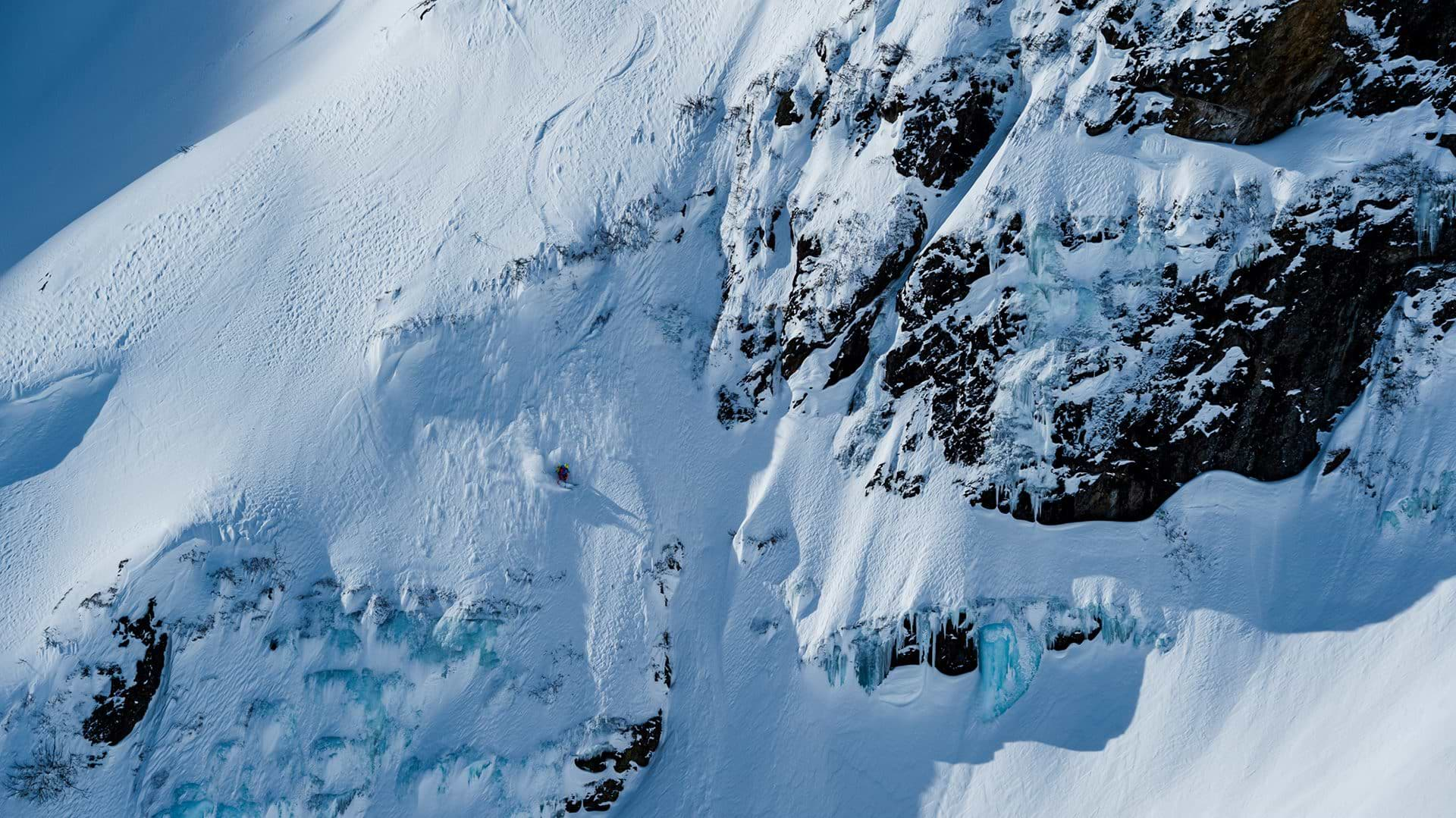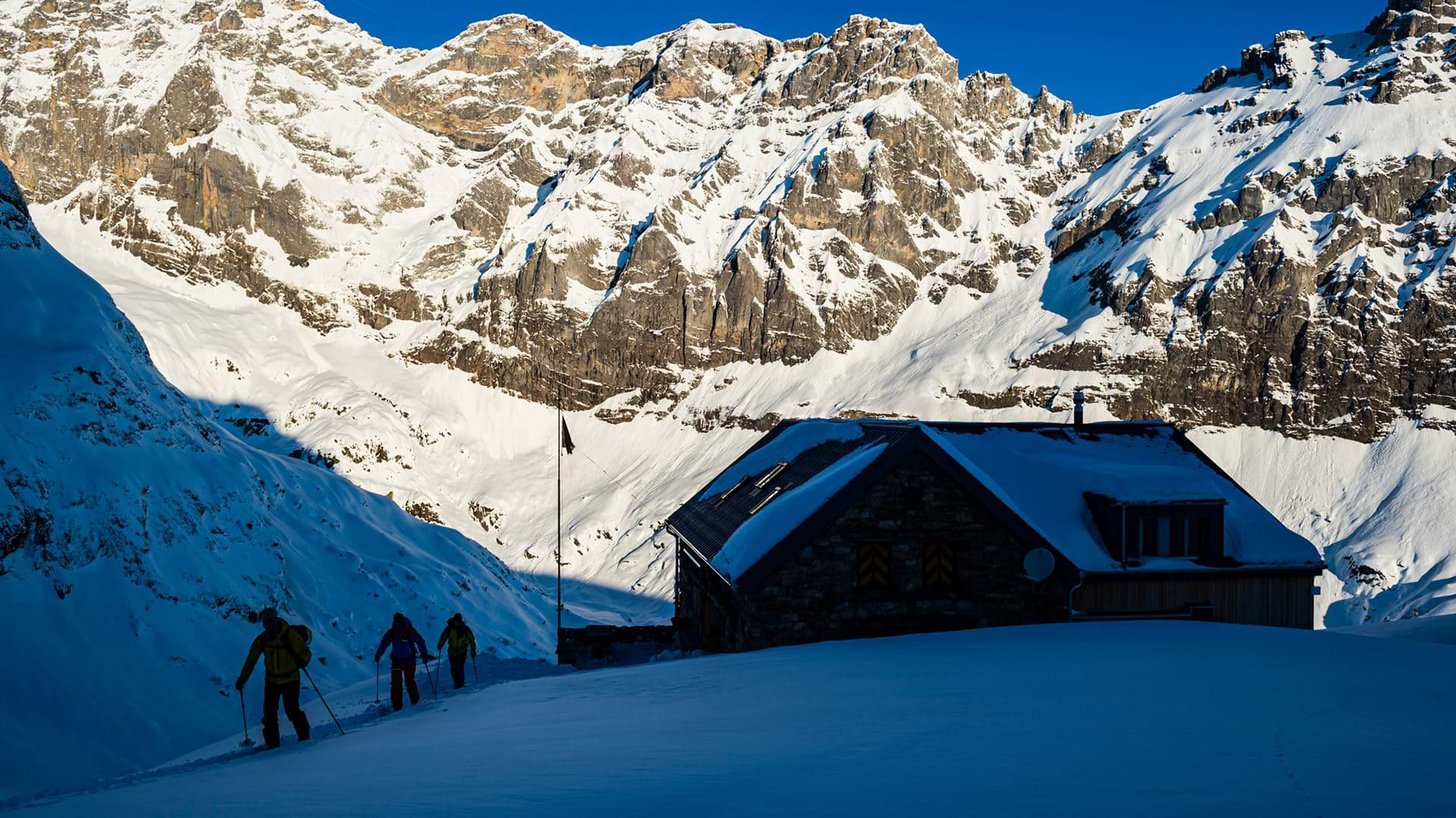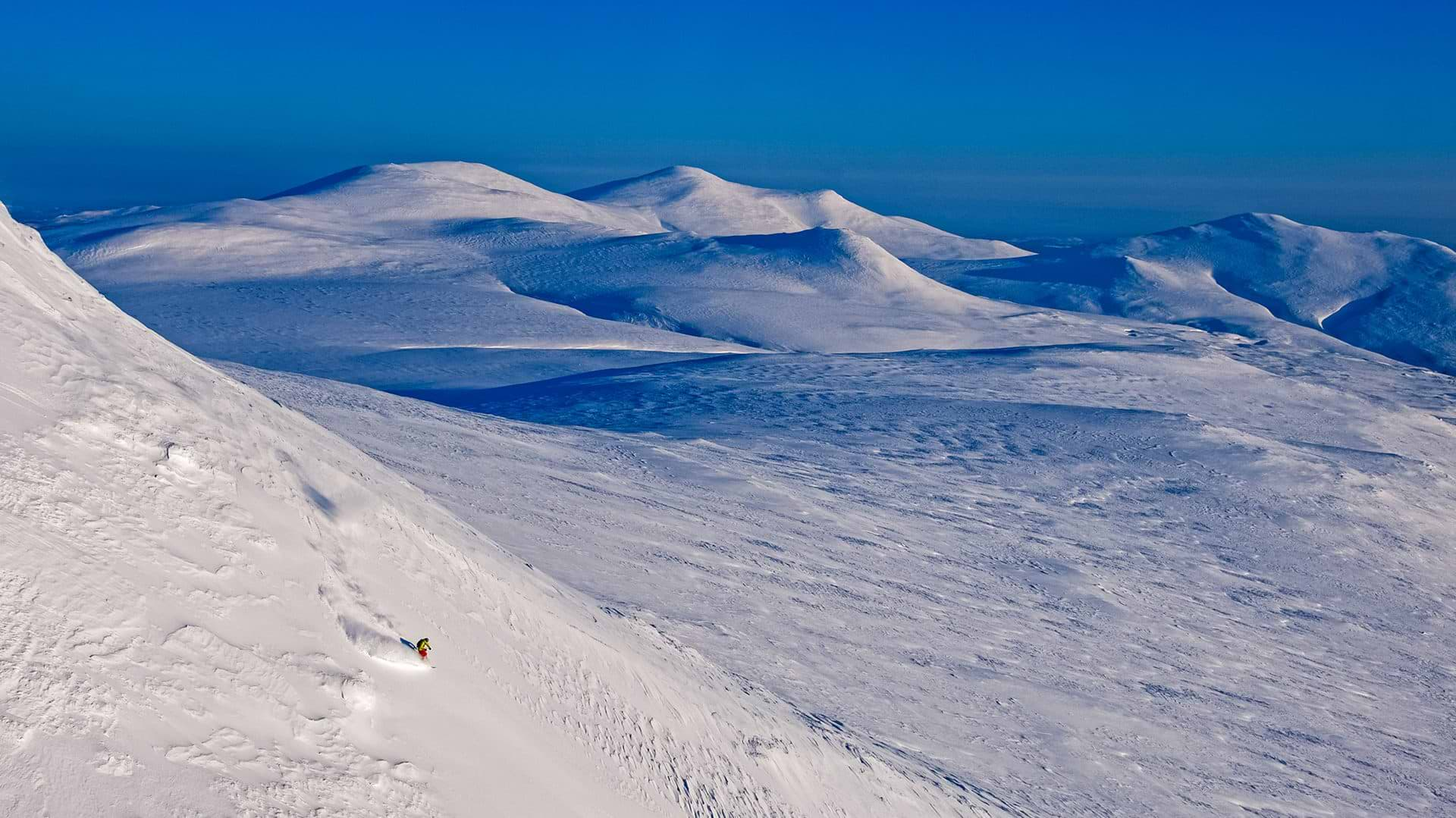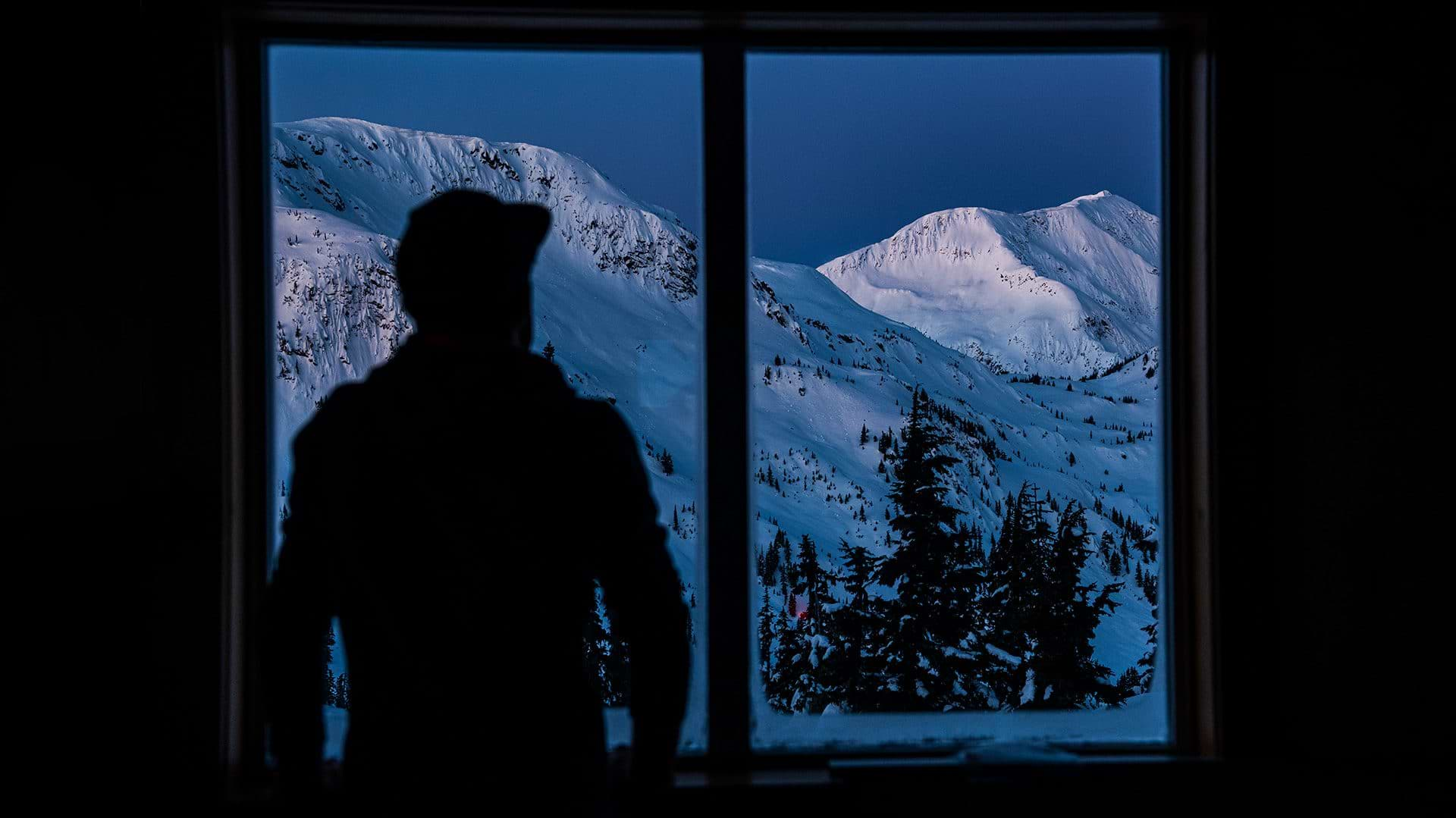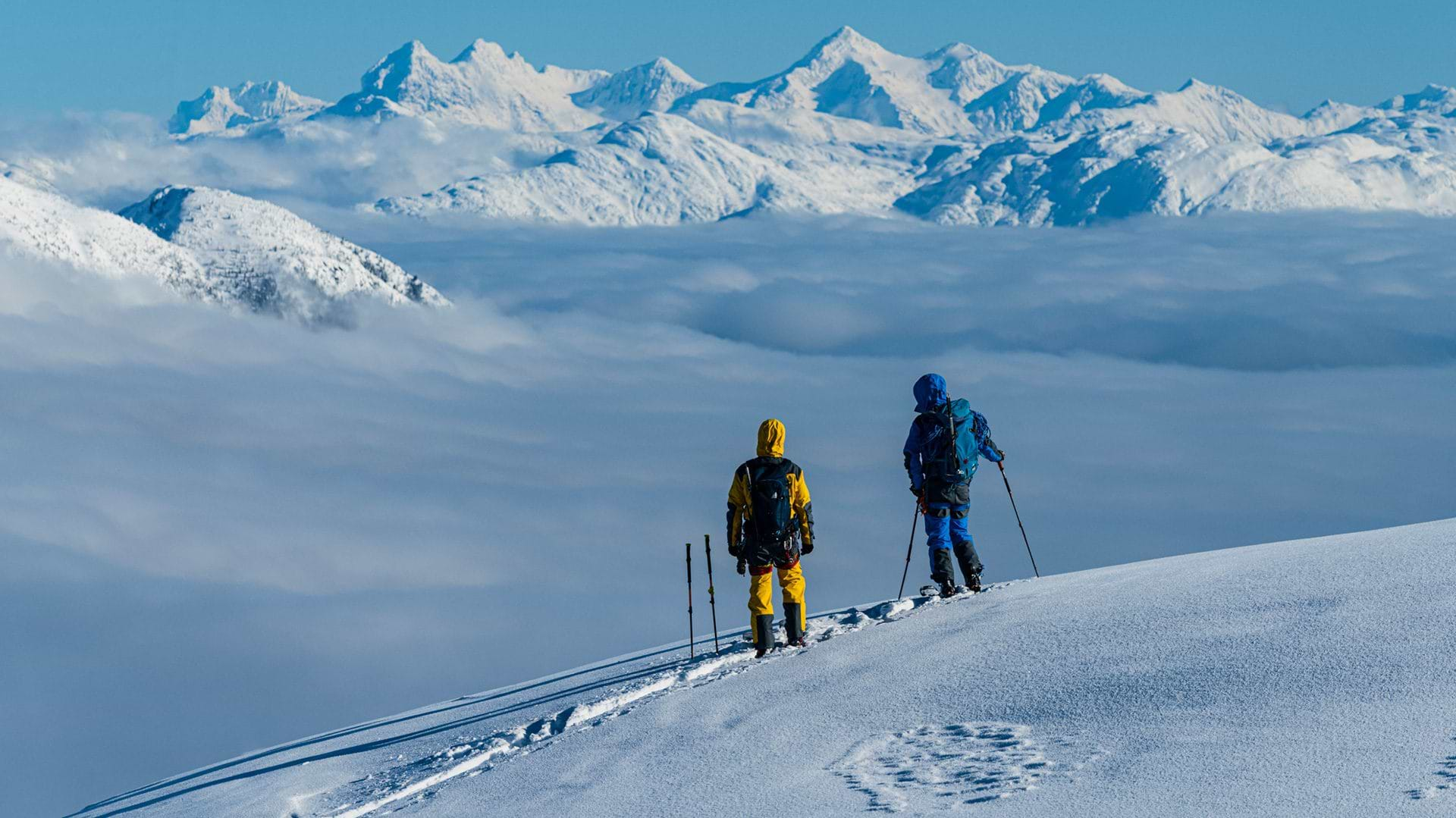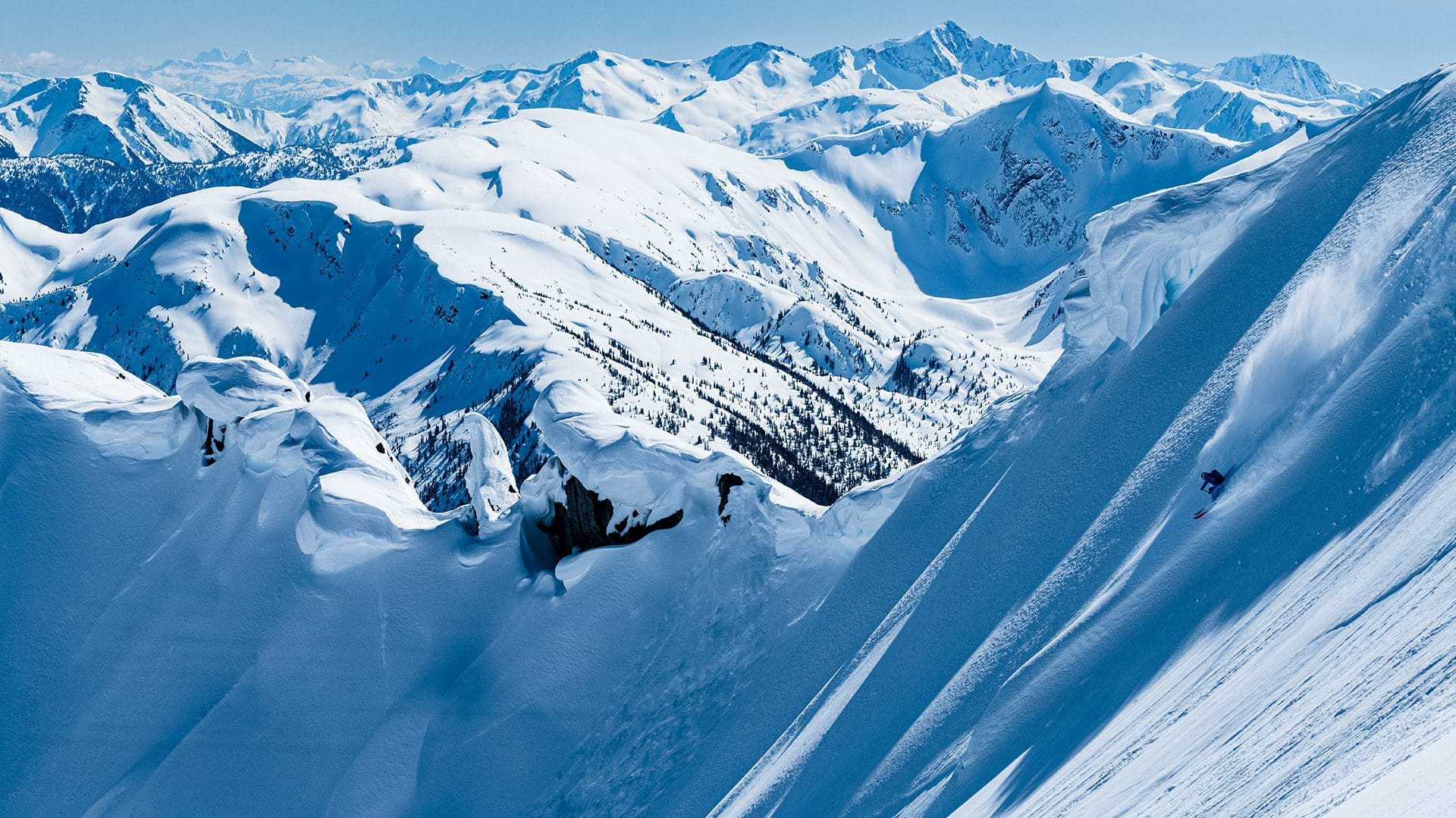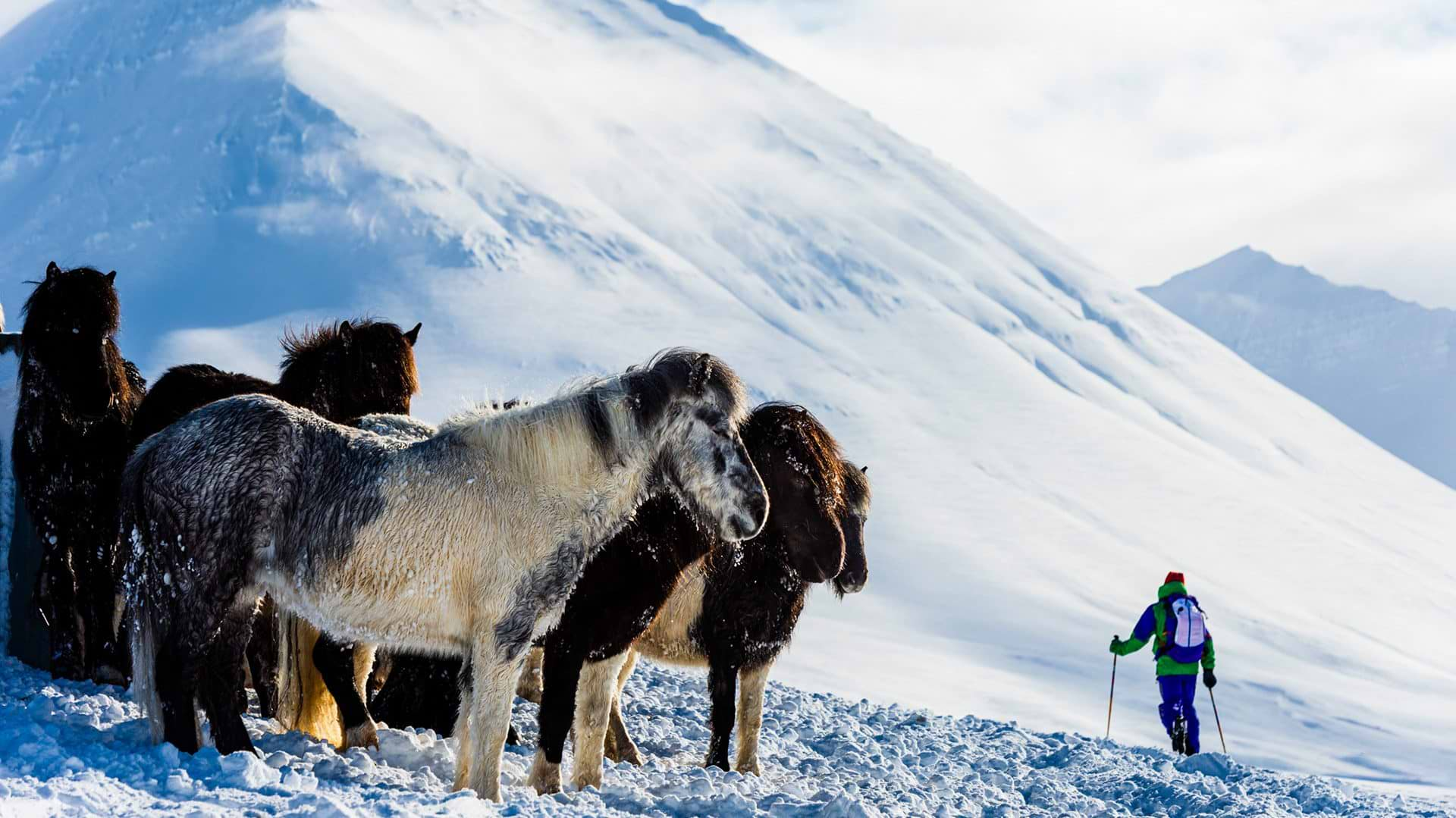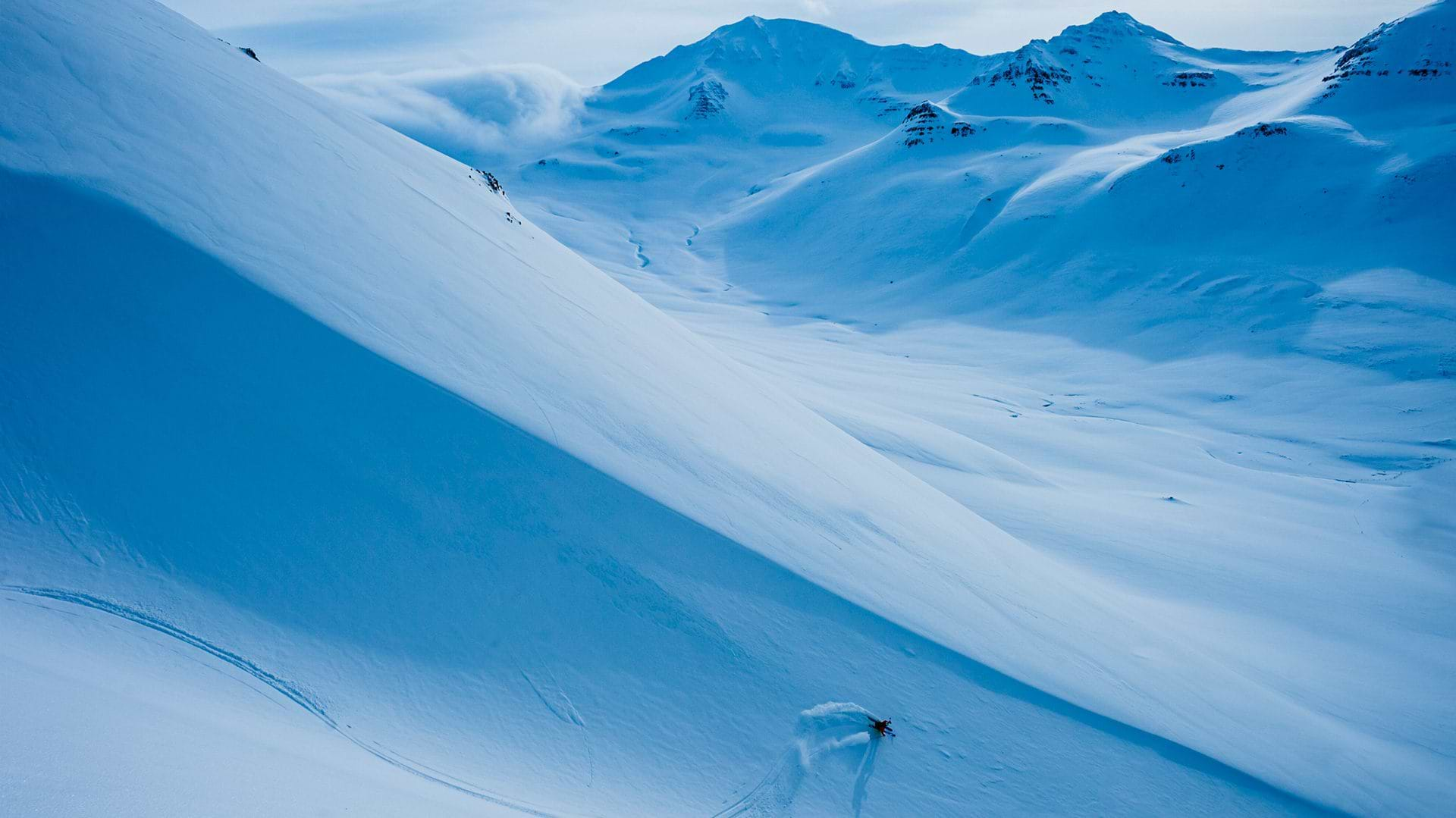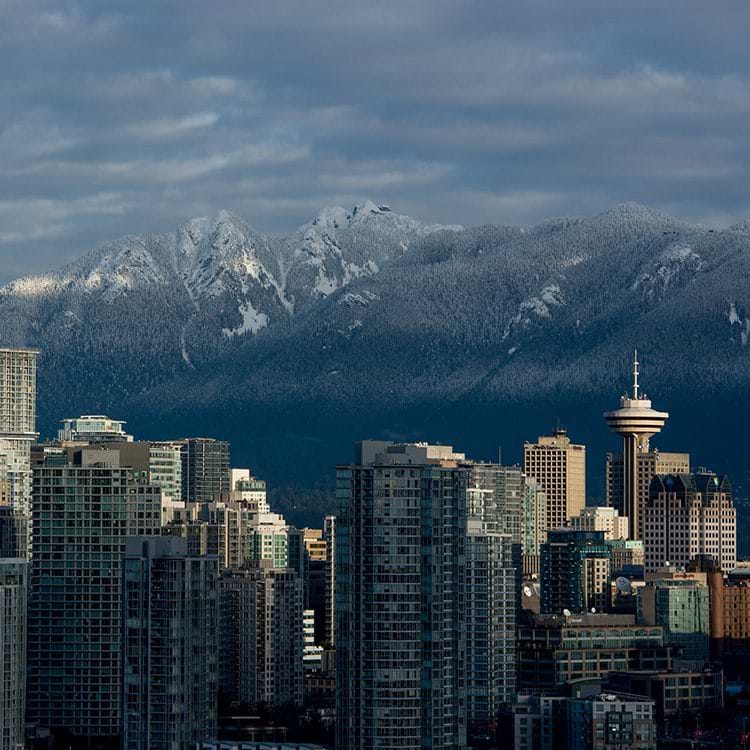As ski touring and split boarding have become increasingly popular, it’s getting busy in the backcountry.
Nothing beats the feeling of earning your turns during an entirely human endeavor, but to experience true solitude — and hopefully score some fresh tracks — you must look beyond the beaten skin track. So, we asked our trusted contributors, favorite guides, and a few local knowledge-carriers for their best advice on where to find the hidden gems for this spring’s ski touring adventures. Surprisingly, they shared their secrets with us!
Ski and sail in the Arctic
Stjernøya is a rugged island off the coast of Alta, in Norway’s most northern province, Finnmark. Here, at the inlet to the Alta fjord not far from North Cape, the ski season is at its height in the spring until late June. This is one of many reasons why mountain guides and ski touring enthusiasts worldwide whisper about this Arctic region. This far north, you will experience 24-hour daylight from mid-May until late July, which makes a spring trip unique. The terrain on Stjernøya is impeccable for ski touring; you skin straight up from the fjords, and the highest peak on Stjernøya is only about 1 000 meters, so you can often bag two peaks in a day. The mountains are dynamic and vast but not glaciated, allowing you to travel almost anywhere in this range.
The Skier's Haute Route
Today, the Urner Mountains are home to one of the Alp’s most enticing regions for ski touring. Between the famous ski towns of Andermatt and Engelberg is a sweet multi-day traverse linking remote valleys and isolated hüttes. Starting in Realp near Andermatt, the Urner Haute Route is typically done in five days — including a big day ascending Sustenhorn (3 505 meters / 11 499 feet) — before descending almost 2 000 vertical meters down to Engelberg on the last day. Relatively remote for being in the Alps, the Urner is a bit off the beaten track, meaning fewer crowds, and with overnights in simple but functional huts along the way, the Urner Haute Route is a brilliant alternative to other classic Haute Route tours in the Alps. Of course, we recommend cheese fondue as appropriate recovery food.
Solitude at the road's end
The extensive backcountry terrain remains the most notable reason to visit this remote mountain village. Stunning peaks offering perfect grades for ski touring itineraries — but barely any people — this is one of the best places in Sweden to earn your turns. And you don’t need to walk up the same mountain twice; there are plenty to choose between, and they are surprisingly big.
This is a reliable snow region within sight of the Norwegian border. The small ski area offers excellent tree skiing, which is beneficial for days with lousy visibility, and the village has character; snowmobile coveralls and huskies are in high numbers.
A gem at France's highest pass
Col du Lautaret is an odd place. There are only a handful of spread-out houses, including an old luxury hotel turned spa, but the coffee bar Café de la Ferme is the only place with a buzz. You might meet Fred, the owner, who is your best bet for local knowledge about the conditions.
Situated between the massif of the Oisans and Briançonnais, Col du Lautaret often experiences harsh weather, and the contrasts can be heaven and hell. Col du Lautaret is not a secret for the ski communities in France and Italy. However, many other ski destinations are much easier to reach, so you can still score freshies at the pass along road D1091, especially in the shoulder seasons. The season typically starts early and continues until late spring, so pick your time wisely.
Off the radar — far from anywhere
Fjord-like inlets heavily indent the rugged Kitimat Range. A coastal climate ensures high annual precipitation, with long and cold winters. This means massive amounts of snow. Add some 250 spectacular mountain peaks and world-class tree skiing, and you start to get an idea about this region. Kitimat, Prince Rupert, and Terrace are the main towns in the Kitimat Range, and historically, these small communities have been all about forestry and other resource-based industries. These industries are still turning the wheels, but the difference in modern times is that the mountains motivate younger people to do more than work in the north — but also make it their home.
Over time a few more people have found their way out on the skin tracks around the Kitimat Range, but it’s still basically empty compared to anywhere else in the province. With 12-15 meters of annual snowfall, a very long season, impressive mountains for human-powered endeavours, a stable coastal snowpack, and an airport in Terrace, what more could you ask for?
Fishing hub turned ski paradise
Accessible only by a long, narrow tunnel inside a mountain, this remote place is not your typical ski destination. Once known as the world capital of the herring industry, Siglufjördur accounted for 45 percent of Iceland’s total exports. In modern times, the little village, beautifully located on a fjord of the same name, is making a name for itself in the ski world. A few heli-ski companies are operating in the area, but more notable is the growing interest in ski touring trips organized by local and international mountain guides.
Iceland has a surreal appearance with its rugged coastline, black volcanic beaches, secluded fjords, glowing aurora borealis and midnight sun. With the ice-capped peaks and geothermal activity, the country of fire and ice is spectacular.
The mountains around the Troll Peninsula are known for their consistent snow, which makes this place perfect for a late spring trip. Towards the end of April, May and June, the midnight sun extends the days into the nights, making a late-season ski touring experience even more unique. Northern Iceland’s remote Arctic location, the lack of big crowds, and the fact that you ski straight from peak to ocean will ensure this trip stands out among many others.
